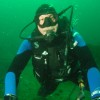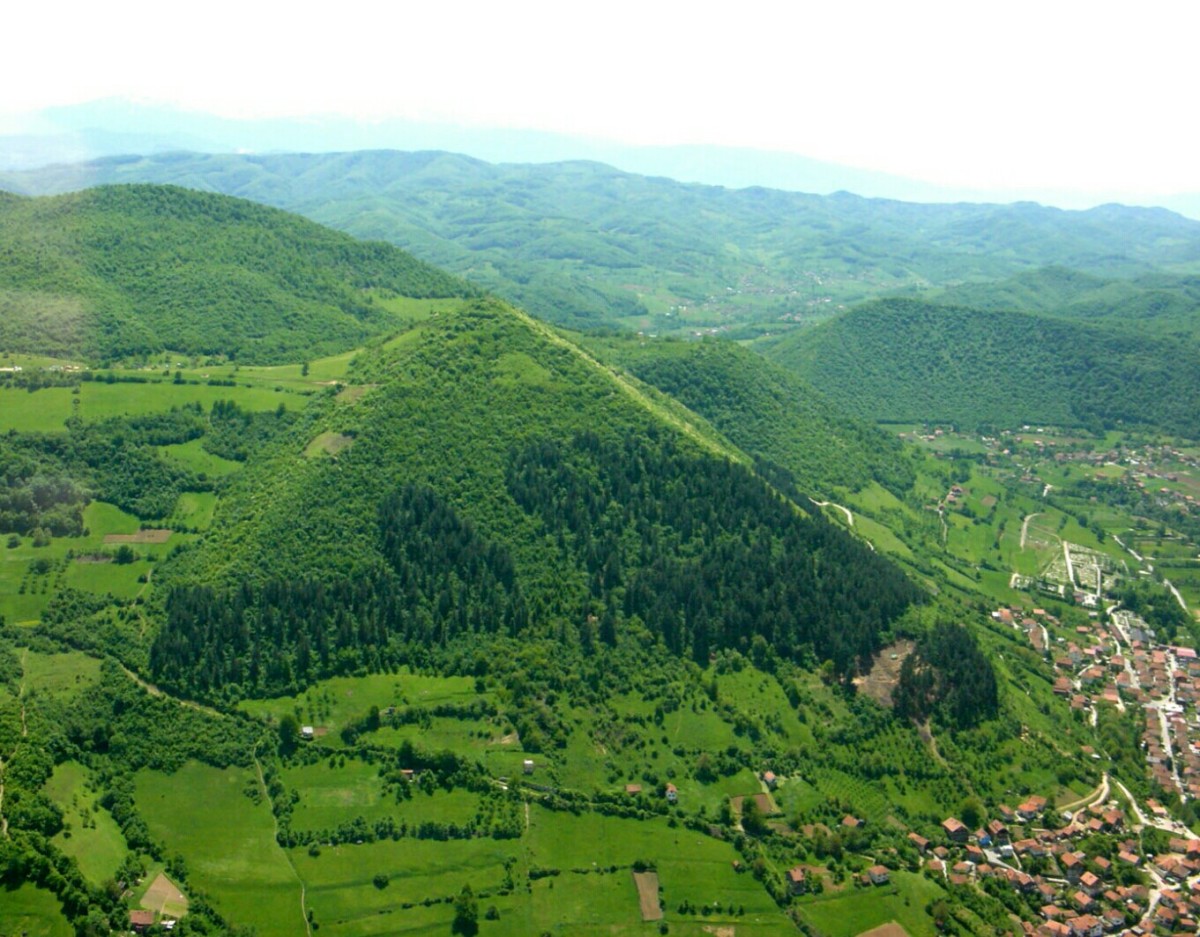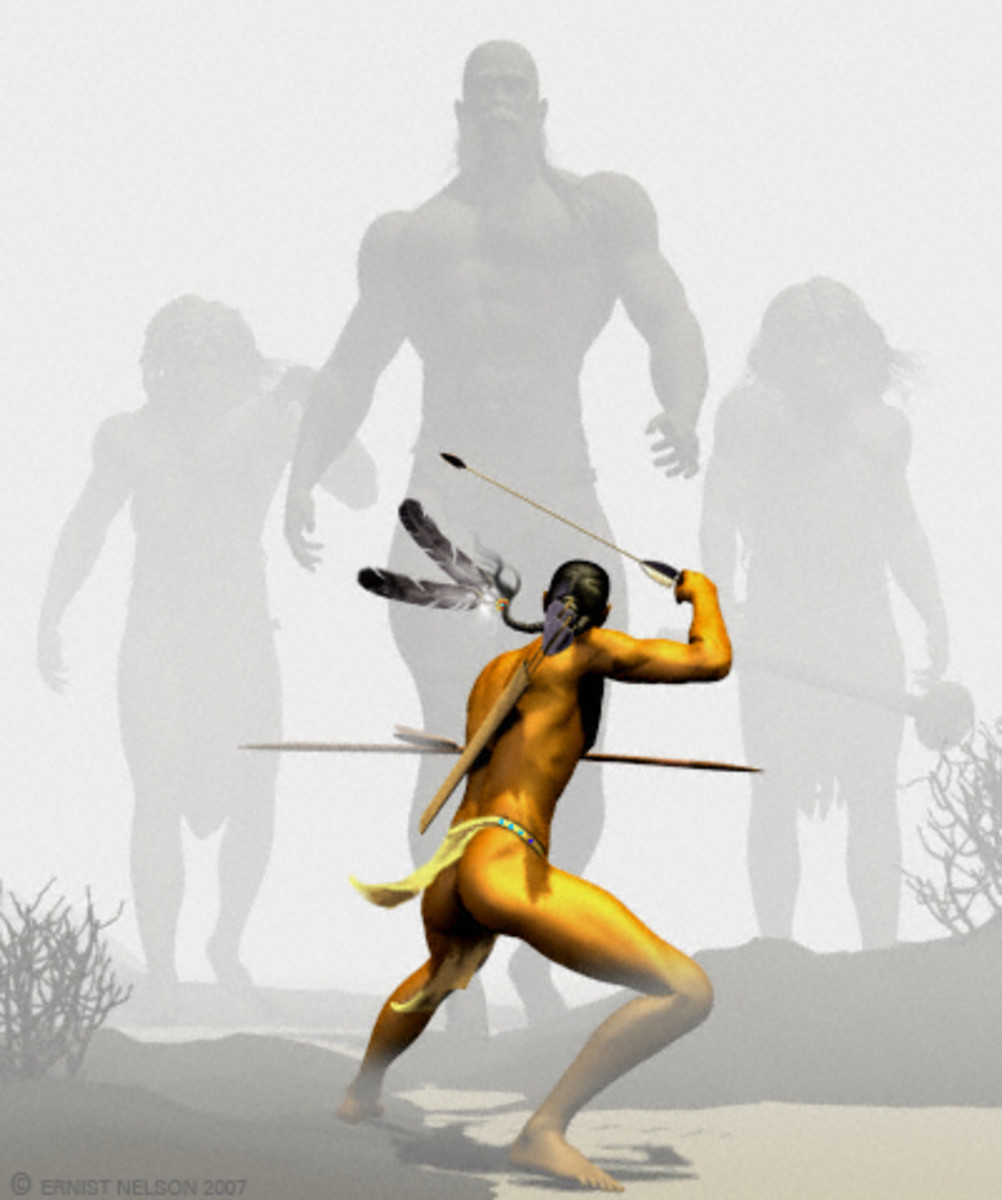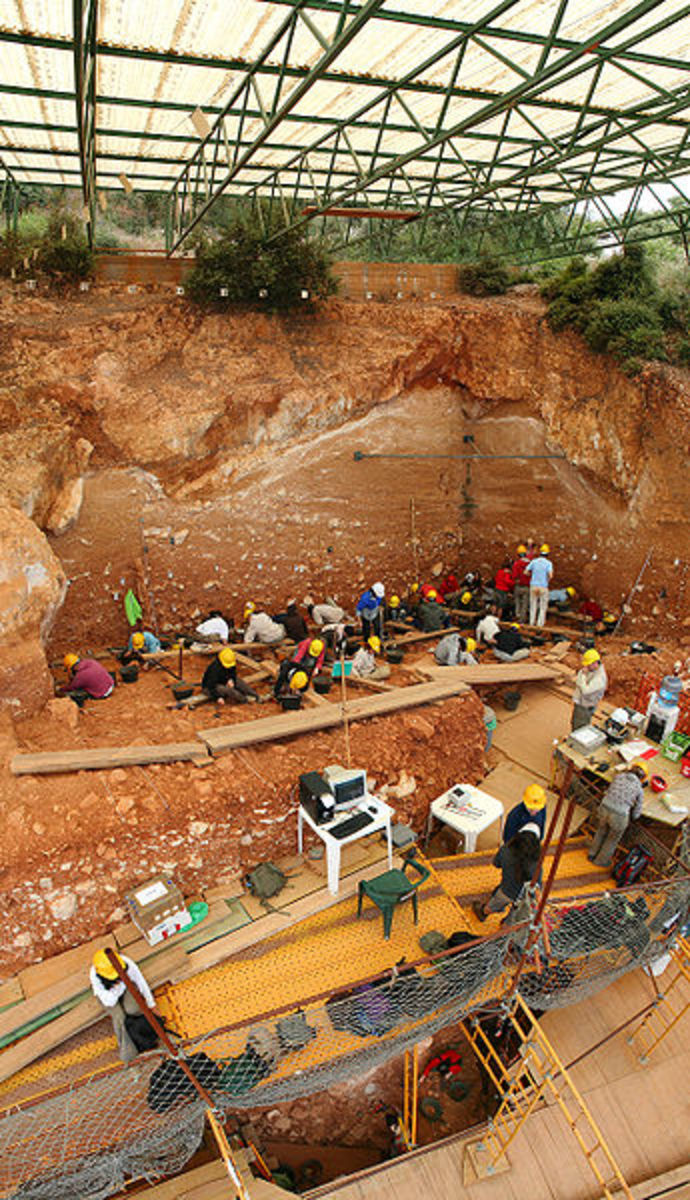A LIFE UNDERWATER CHAPTER 7
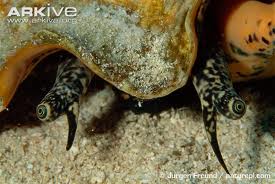
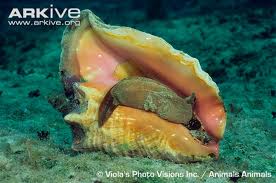
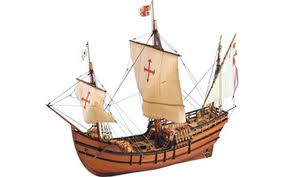
Queen Conch and Columbus's Pinta Pirates!
As I had mentioned earlier, my girlfriend had obtained her degree in aquaculture prior to our move to the T & C's. Her project in the Turks and Caicos was to attempt a feat which had never been successfully attained in mariculture history. Her job, upon our hiring, was to hatch egg masses of wild conch and bring the hatched larval “veligers” through metamorphosis and into baby conch the size of a pin heads. The queen conch has been an integral source of food and protein for the island inhabitants throughout the Caribbean since time began. Sadly, due to over fishing and habitat destruction, the fate of the queen conch had become tenuous and in many islands they had become virtually extinct. Our goal was to attempt to hatch them, stabilize them in captivity, raise them to a size less vulnerable to predation and salt the nutrient rich reefs and banks of the islands with a fresh population. But first we had to find the egg masses and second we had to figure out what the catalyst for metamorphosis was!
Famous for their large golden shell lined with its rich iridescent shades of pink, the conch is like an underwater cow. They are herbivores grazing the underwater pastures of algae across the sand flats and between the coral heads of the reef. They are a social animal and travel in groups of as few as six on upwards into the hundreds. They dig their hornlike operculum located at the end of their fleshy foot into the sand bottom and push mightily with it causing them to hop or jump forward. A conch, in this manner can travel up to a mile a day! The young conch is on everybody's food chain! Crabs, rays, nurse sharks and many fish species all thrive on their succulent meat. But the most dangerous predator would always be man and his tendency is to always over exploit a natural resource!
We would spend hours towing ourselves over the hundreds of square miles of banks and flats surrounding the Turks and Caicos until we would locate a breeding population of adult conch. The egg laying season for conch runs from March through July when the water is the warmest. This allows for a higher survivability of the new born conch. We would free dive down and cautiously approach the grazing conch population trying not to make any rapid movements. A conch has an eye on the end of each of two stalks that are waving just ahead of the protection of the shell. Their mouth is like a short elephant's trunk, called a proboscis, that would probe and vacuum the nutrients it seeks from the surface of the sand, coral, and stalks of growing algae that it encounters. Gently we would lift up each conch and upon determining if it was a female we would often find beneath it a stringy egg mass that looked similar to a bunch of spaghetti left in a pile on the bottom of a kitchen pot overnight. We would slip the egg mass into a container and after gathering a dozen or so masses we would head back to the island lab to await the hatch.
Incubation of an egg mass was about 7 days and the hatch would be a free swimming larval creature that looked like something straight out of star wars when studied under the microscope! This swimming “verliger”larvae would float around in the water column, drifting about at the mercy of the currents and tides until it passed over the “right” kind of algae that could sustain it upon metamorphosis. What we learned (and what no one knew before our aqua culture work) was which type of algae was the catalyst for the veliger to settle to the bottom. When the right type of algae was haphazardly found, overnight the tiny veliger would metamorphosis into a baby conch the size of the head of a pin. We went nearly an entire season before my girlfriend narrowed down what type of algae the verligers needed to survive. Subsequently we had mass mortality after mass mortality and were becoming quite frustrated and depressed at our lack of progress.
There are no secrets when one lives in the tropic islands! Not unlike living in any tiny community anywhere in the world, everyone knows everyone else's business! And if they don't know it, they make it up! The “coconut telegraph” is age old and relentless. It was not long before we discovered that all the local conch fishermen had figured out that we were a knowledge source for the location of conch populations to be exploited for their personal fisheries. They were watching where we were getting our conch egg masses each day that we went out! We would return to a large population of conch we had recently located for more egg masses only to discover that they had been completely fished out by the local boys! All that we would find would be a pile of empty harvested conch shells lying in a heap on the bottom! This happened on a regular basis and greatly added to our frustration. We decided that we would have to run greater distances, dive over the side for half an hour at some random spot that was devoid of conch and then depart for the island as if we had gathered all the eggs that we needed. Then we would slip thru various deserted island passes, hiding behind the cover of sand bars and spits of land and then run to the “real” conch beds to gather our egg masses. This worked well and confused the fishermen until they eventually caught on. Then it was a matter of poker bluffing! Sometimes we dove on the real conch population! Sometimes we would make multiple stops and dives with or without conch populations, further confusing the fishermen! It became a very unique rendition of the old shell game….no pun intended!
Eventually the proper catalytic algae were isolated and my girlfriend became the first person in the Caribbean to bring a conch from egg mass all the way through to complete metamorphosis in captivity. As a result there are conch “farms” operating to this day in the islands that raise the little guys to a size where their survivability is greatly enhanced. The banks and flats are then liberally seeded with these young adults, furthering the continuation of the species. This is what environmental science and marine conservation is all about!
Being a lone cluster of islands that jut out into the blue waters of the Atlantic and located at the end of the Bahama Island chain, the Turks and Caicos Islands were natural obstructions that would become the graveyard of countless ancient shipwrecks. Being difficult to see as low lying land masses and surrounded by jagged coral reefs two or three miles offshore, the Turks and Caicos Islands were the ancient mariner’s nightmare landfall! I commonly would find evidence of ancient wreckage in my underwater explorations of the reefs and my living room to this day is full of bits and pieces of seafaring history.
Throughout my life, while diving and exploring the global oceans, I have discovered many dozens of shipwrecks, both ancient and modern. I have always strongly sensed the trauma and terror that such a deadly nightmare of that magnitude would have generated. When studying the bones of these unfortunate vessels lying scattered across a coral reef, I can almost feel the ghosts of the doomed crewmen communicating with me. Time stopped abruptly for these brave souls as the noise of crashing waves and splintering wood became the last sounds they would ever hear in this mortal life. To dive an ancient wreck, in my way of thinking, is no different than exploring a sacred tomb on land and deserves the solemn respect of those that went before us.
I was filling scuba tanks one afternoon in my land bound sailboat quasi dive shop when a gentleman walked into the shop to talk to me. He introduced himself as Donald Keith, a marine archaeologist from the famous Texas A & M, Institute of Nautical Archeology. Don told me that he worked directly for Dr. George Bass of National Geographic fame and who was credited with finding the oldest shipwrecks ever discovered to date, the ancient Phoenician fleet of the Mediterranean. He asked me if I would be willing to lease my boats and help search for one of Columbus's lost ships, the Pinta! Without hesitation, I agreed and very quickly Don and I became fast friends, both connected by our mutual love for adventure and the lure of a potentially unique and historic discovery to be found beneath the sea!
As most of us remember, Columbus sailed in search of the New World with three ships given to him by Queen Isabella of Spain. The largest of the three ships was the Santa Maria and was Columbus's flagship. The next in size was the Pinta and the smallest vessel in the fleet was the Nina. What most people do not know is that the captain and actual owner of the Pinta went by the name of Pinzon. According to historians, Pinzon did not care for the appointed Admiral, Columbus, and continually was at odds with the Admiral's decisions during the voyage. Columbus eventually discovered the many islands of the Bahamas and Caribbean but during a serious storm encountered on that first expedition to the New World, he managed to wreck and lose his flagship, the Santa Maria, on a reef off the island of Hispaniola, now more commonly known as Haiti. Captain Pinzon, assuming that Columbus had been killed and the Nina lost, set his sails on the Pinta and headed back to Spain alone. His lonely vessel arrived safely and Captain Pinzon was hailed as the founder of the New World while being wined and dined in the court of the King and Queen. I can only imagine this heady hero’s welcome and how intoxicating it was for Mr. Pinzon to be treated much like a modern day celebrity!
As history tells us, however, Columbus did not die! He made contact with the tiny, Nina who somehow had survived the same storm that sunk the Santa Maria and she managed to come to Columbus's rescue. But since the Nina was so small, Columbus was forced to leave 50 of his surviving crew from the Santa Maria on Hispaniola, promising to return for them as soon as possible. Sadly, when Columbus did return to rescue his abandoned crew two years later, he found no trace of them. They had been killed to a man and eaten by the warlike Caribe Indians who practiced cannibalism.
Two months later after wrecking the Santa Maria, Columbus and the limping Nina arrived home in Spain and Captain Pinzon was formally disgraced for abandoning his Admiral in his time of need. Captain Pinzon now became a bitter and angry man who had his honor questioned and had lost favor in the court of the King and Queen of Spain! Having experienced the savory taste of fleeting fame, he found financial backers on his own and put together a four vessel fleet destined to return for further exploration of the New World. One of those four vessels was once again the Pinta!
According to the archival research done by the Institute of Nautical Archeology, Pinzon's ship's log entries indicate that they were in the New World exploring the narrow waters separating the southern banks and low lying islands of the Turks and Caicos and the northern shores of Hispaniola. Ancient navigation was haphazard at best and “dead reckoning” and “gut instinct” often guided an exploratory captain, protecting his vessel from the whims of unseen and unknown currents that could sweep a vessel on to the teeth of a coral reef.. On this fateful night, however, the Pinta's luck ran out and she collided with “a short and jagged reef rising up from hundreds of leagues of water with no land in sight”. Pinzon's log further states that the vessel was a total loss and since no land mass was anywhere in sight to swim to, it was determined that all the ship's crew had drowned.
Two dozen decades would pass before the reef was named on charts as Molasses Reef after a sugar laden vessel that had also encountered its jagged teeth and ultimately shared the same fate as the Pinta. The reef was 32 miles from my tiny island of Pine Cay and 15 miles from Provo. Indeed the mile long reef on the edge of the Turks Island Banks was a ship eater, rising up suddenly from thousands of feet of blue ocean water to extend its coral teeth to just beneath the surface of the sea. When we first began our explorations of this deadly formation we located the remains of dozens of shipwrecks. So many in fact that artifacts had sifted down through other ship wreckage on top of one another! Molasses Reef was a veritable maritime “time capsule”.
I had never fully comprehended the actual size of the ships of exploration! These ships of discovery were in actuality quite small by today's standards. The wreck of the Pinta, based on the size of her intact ballast pile we discovered, indicated that her length was not more that 50 to 60 feet! This is the size of your average Hatteras or Bertram sport fishing vessel! I would learn later through my own experiences that it really is not the size of the vessel that insures safety in the vast and tumultuous oceans but rather the design and seaworthiness of the hull that stacks the deck in your favor for survivability.
What Don, my girlfriend and I found on Molasses Reef was a concreted ballast pile with 16 scattered Bombardetta cannons and Verso rail guns. The ballast pile appeared to be untouched for centuries and was displayed as a mound of round granite river stones. The last hands to touch these stones were the ship yard laborers in Spain who would lay the stones in the bowels of the ship, known as the bilges, to counter balance the weight of the ship's masts. Finding rounded gray granite river stone which stands out against the stark white of a limestone reef, is usually the first indication of a wreck site when you are involved in underwater exploration.
The weaponry is what really dictated the age of this wreck! The Bombardetta cannons were twelve and sixteen feet long. They were some of the first cannons used on ships of discovery and were unique in that they were open on both ends. The cannoneer would load the ball and powder from the rear of the bombardetta, hammer in an iron wedge to seal the rear opening, pour powder in the touch hole on top the cannon and pray the cannon ball fired out the front of the cannon and did not blast the rear plug back into the deck crew's faces! The Verso rail guns could swivel and were smaller. They would mount on the rail, be loaded at an open breech with shot and powder and an iron wedge would be hammered into the breech to seal it. Like the bombardetta, the powder primed touch hole would be ignited with a burning wick and hopefully the ball would fire out the end of the weapon and not blow the breech wedge back into the face of the gunner! Unfortunately the latter happened all too frequently and both types of cannons were phased out of service by the early 1500's. Sadly, not before the maiming, blinding and killing of many able seamen! Being an ancient mariner was not for wimps!
What this type of weaponry meant to us was that we had located one of the oldest ships of discovery ever found in our hemisphere! After doing our initial survey of the wreck, Don began planning a major excavation with the cooperation of the Turks Island government. My job would be to once a week make the 64 mile round trip run by boat to make sure the wreck site would remain safe, intact, undamaged and untampered with. Don was very concerned that the wreck may get tampered with or pirated by renegade treasure hunters before a team of skilled archaeologists could sift through the scattered wreckage. That initially seemed to be an easy task for me to accept as the likelihood of someone pirating this wreck seemed absurd. After all, had not the Pinta lain undisturbed for over 500 hundred years! I soon found that I was very wrong in that assumption!
On my second trip out to the wreck site with my girlfriend, we encountered a large rust streaked trawler anchored on Molasses reef very near the Pinta wreck site. Suddenly wary, I idled down the boat's speed and studied the scene through my binoculars. There were divers in the water and as I watched I saw that they were bringing up items from the wreck site! What I also observed was that they had spotted me! Coming quickly toward me was their runabout skiff with two huge thugs carrying automatic rifles aimed at our boat! We were alone, unarmed and too far away from land for anyone to help us. We would be fish food very quickly if we didn't think of something fast!
It is common knowledge in the islands that people just disappear. Call it the Bermuda Triangle or an innocent person being in the wrong place at the wrong time when a drug deal is going down or simply modern day piracy. I had heard it all and have had my own personal experiences with the dark side of evil in remote places. It was with certainty I was looking at a very dangerous situation. I had no weapon but I did have a VHF radio and I picked up the microphone and began broadcasting my location and a description of what was coming toward us! I talked my ass off! I was banking on the trawler having their VHF radio on as well and they could hear everything I was saying about their position and location and who they were. If something happened to us, there was an excellent chance that someone on the nearby island of Provo would know who did it. At least that is what I was hoping the captain of the pirate vessel was thinking too! I told my girlfriend to get out her camera and get behind me and to take photos like her life depended on it. It did!
The Pirate boat came alongside our vessel with its menacing weapons aimed directly at us. During the heated verbal exchange that ensued with the gunmen and me, I kept the VHF microphone key pressed down waving it at the thugs. They hesitated and it appeared to me that they did not know what to do with us now. Uncertainty briefly flashed over their faces and before they could come to a decision that would not necessarily be in our favor, I hit the throttles on my boat side swiping their skiff which managed to knock both thugs down! I roared away in a large arc around them, always keeping the center console between my body and their guns while my girlfriend hugged the deck of our boat. We got away and no shots were fired that I could hear over the roar of my outboard. Later, we had pause to reflect on how fortunate we really had been that day when we later learned that not a single soul had ever heard our VHF radio broadcast on Provo that afternoon! We had pulled off a very lucky bluff!
As things turned out the pirates had placed an explosive charge in the ballast pile of the Pinta and detonated it, doing irreparable damage to many priceless artifacts. They apparently had been looking for fabled red pearls, emeralds, gold and silver but only found iron artifacts. The Institute of Nautical Archeology used my girlfriend's photos to discredit the pirates on the Today Show a week later when the Institute formally announced their discovery of the Pinta. Ultimately Don made it back with an excavation team and a support vessel that we were honored to work with. We worked hard, fully recovering the fragile remains of this amazing historic time capsule. After several years of restoration work at the Institute's headquarters at Texas A&M, a museum was established in Grand Turk Island which is open and operating today. Don graciously gave us credit for saving the wreck under armed threat and the photos and story of our encounter adorn a wall in the museum to this day.
